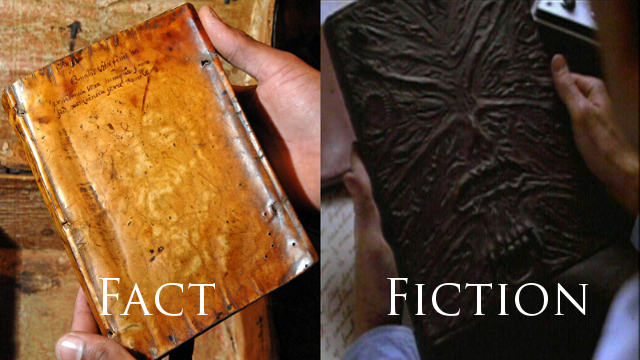Anthropodermic Bibliopegy or Books Bound in Human Skin

This topic has interested me for quite some time. I find the practice strangely intriguing and gruesome at the same time. In fact this practice dates back to the 17 th century and there are a number of these strange in public (and probably private) collections as noted below. Wikipedia has a fairly comprehensive article on the practice of binding books in human skin - also known as Anthropodermic Bibliopegy.
Please tell us if you have any experience or expertise in these books...
From Wikipedia, the free encyclopedia
Anthropodermic bibliopegy is the practice of binding books in human skin. Though extremely uncommon in modern times, the technique dates back to at least the 17th century. The practice is inextricably connected with the practice of tanning human skin, often done in certain circumstances after a corpse has been dissected.
Surviving historical examples of this technique include anatomy texts bound with the skin of dissected cadavers, volumes created as a bequest and bound with the skin of the testator (known as "autoanthropodermic bibliopegy"), and copies of judicial proceedings bound in the skin of the murderer convicted in those proceedings, such as in the case of John Horwood in 1821 and the Red Barn Murder in 1828.
The libraries of many Ivy League universities include one or more samples of anthropodermic bibliopegy. The rare book collection at the Harvard Law School Library holds a book allegedly bound in human skin, Practicarum quaestionum circa leges regias Hispaniae, a treatise on Spanish law, though testing on the binding has proven inconclusive. A faint inscription on the last page of the book states:
"The bynding of this booke is all that remains of my deare friende Jonas Wright, who was flayed alive by the Wavuma[1] on the Fourth Day of August, 1632. King Btesa did give me the book, it being one of poore Jonas chiefe possessions, together with ample of his skin to bynd it. Requiescat in pace."
The John Hay Library's special books collection at Brown University contains three human-skin books, including a rare copy of De Humani Corporis Fabrica by Vesalius.
Some early copies of Dale Carnegie's Lincoln the Unknown were covered with jackets containing a patch of skin from an African American man, onto which the title had been embossed. A portion of the binding in the copy that is part of the collection of Temple University's Charles L. Blockson Collection was "taken from the skin of a Negro at a Baltimore Hospital and tanned by the Jewell Belting Company".
The National Library of Australia holds a book of 18th century poetry with the inscription "Bound in human skin" on the first page.
Another such book resides at the University of Georgia in the Richard B. Russell Special Collections Library.
Several anatomical volumes, including at least one belonging to and apparently prepared by the renowned anatomist Joseph Leidy (September 9, 1823 – April 30, 1891) are in the Mütter Museum of the College of Physicians of Philadelphia. As of August 2012, these volumes and samples of human-skin leather were on public display.
There is also a tradition of certain volumes of erotica being bound in human skin. Examples reported include a copy of the Marquis de Sade's Justine et Juliette bound in tanned skin from female breasts. Other examples are known, with the feature of the intact human nipple on one or more of the boards of the book. One volume from very early in the 17th century is said to show the face of a priest who was put to death for his alledged part in the attempted assassination of a King.

